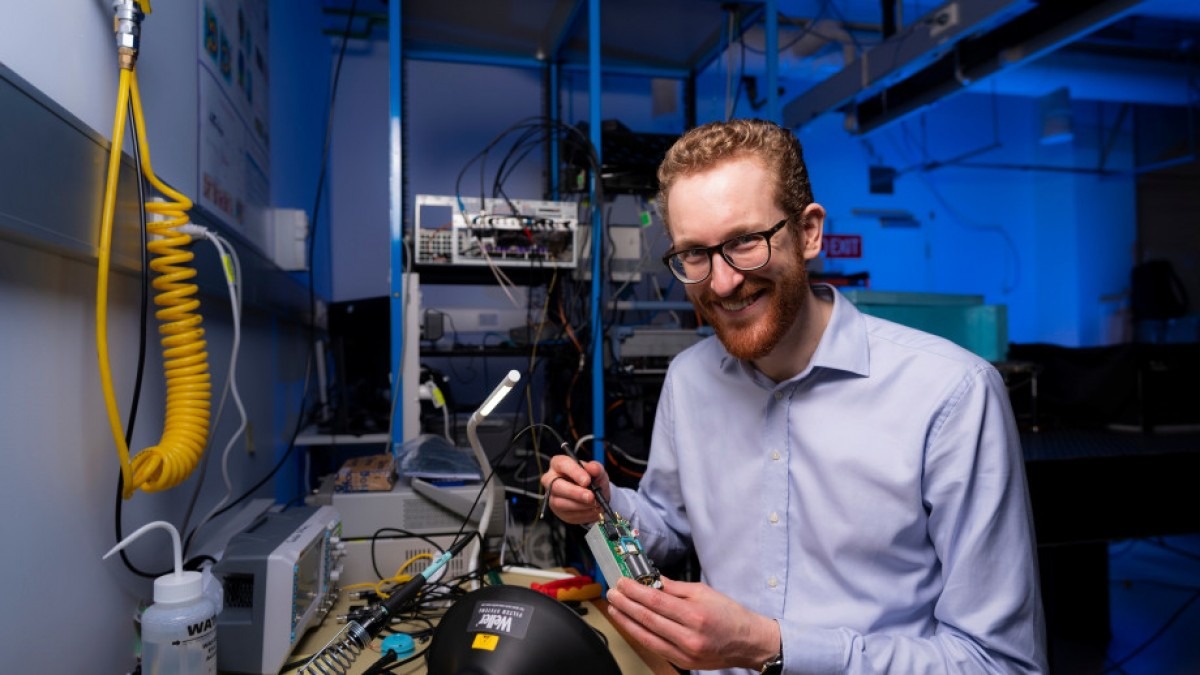World’s first room-temp quantum computer set for release
The world's first room-temperature quantum computer is in the final stages of development and is set to be installed at the Pawsey Supercomputing Centre in Perth and activated later this year.
Unlike other quantum computers, this lunchbox-sized invention does not need extreme sub-zero temperatures to work and is on the cusp of being the most powerful computer ever created.
Quantum computers promise a new era in ultra-secure networks, artificial intelligence and therapeutic drugs, and will be able to solve certain problems much faster than today's computers.
Scientists at The Australian National University (ANU) have invented the groundbreaking technology used in the new computer, and are a driving force of the spin-out company Quantum Brilliance that seeks to commercialise the next-generation device.
Pawsey and Quantum Brilliance will collaborate with other Australian industry leaders and researchers to develop cutting-edge quantum applications in machine learning, logistics, defence and aerospace.
ANU Vice-Chancellor Professor Brian Schmidt said Quantum Brilliance represents the future of quantum computing.
"As Australia's national university, ANU is committed to creating the technologies and industries of tomorrow, today. This work is vital to ensuring the future prosperity of our nation and the world," Professor Schmidt said.
"Quantum Brilliance and its work to develop an affordable room temperature, lunchbox-sized quantum computer that will become part of everyday life is the perfect example of this.
"The University's goal to create a billion-dollar company in the next five years will happen by supporting research commercialisation for spin-outs like Quantum Brilliance.
"Quantum Brilliance is a company in its early days. But while it is early days, backing it now could lead to huge payoffs for all of us."
Quantum Brilliance, led by ANU physicists Dr Marcus Doherty and Dr Andrew Horsley, has used synthetic diamonds to develop quantum microprocessors.
The team's innovative platform enables the high computational power of quantum computing to be used for more widespread applications.
Dr Horsley, CEO of Quantum Brilliance, said the new computer will transform industries in Australia and around the world.
"Because of our unique diamond-based technology, customers can run our quantum computers themselves, and we provide them a full set of tools to explore how quantum can help create new capabilities."
Pawsey and Quantum Brilliance will join forces with other Australian industry leaders and researchers as part of Pawsey's Quantum Pioneer Program to develop cutting-edge quantum applications in machine learning, logistics, defence, aerospace, quantum finance and quantum research.
"I am delighted to see active industry and researcher engagement with quantum computing," Pawsey's Executive Director Mark Stickells said.
"We are excited to explore the potential of this technology for Australian researchers to further accelerate their scientific workflows using the potential of quantum computing within the advanced infrastructure of a national research supercomputing centre."

